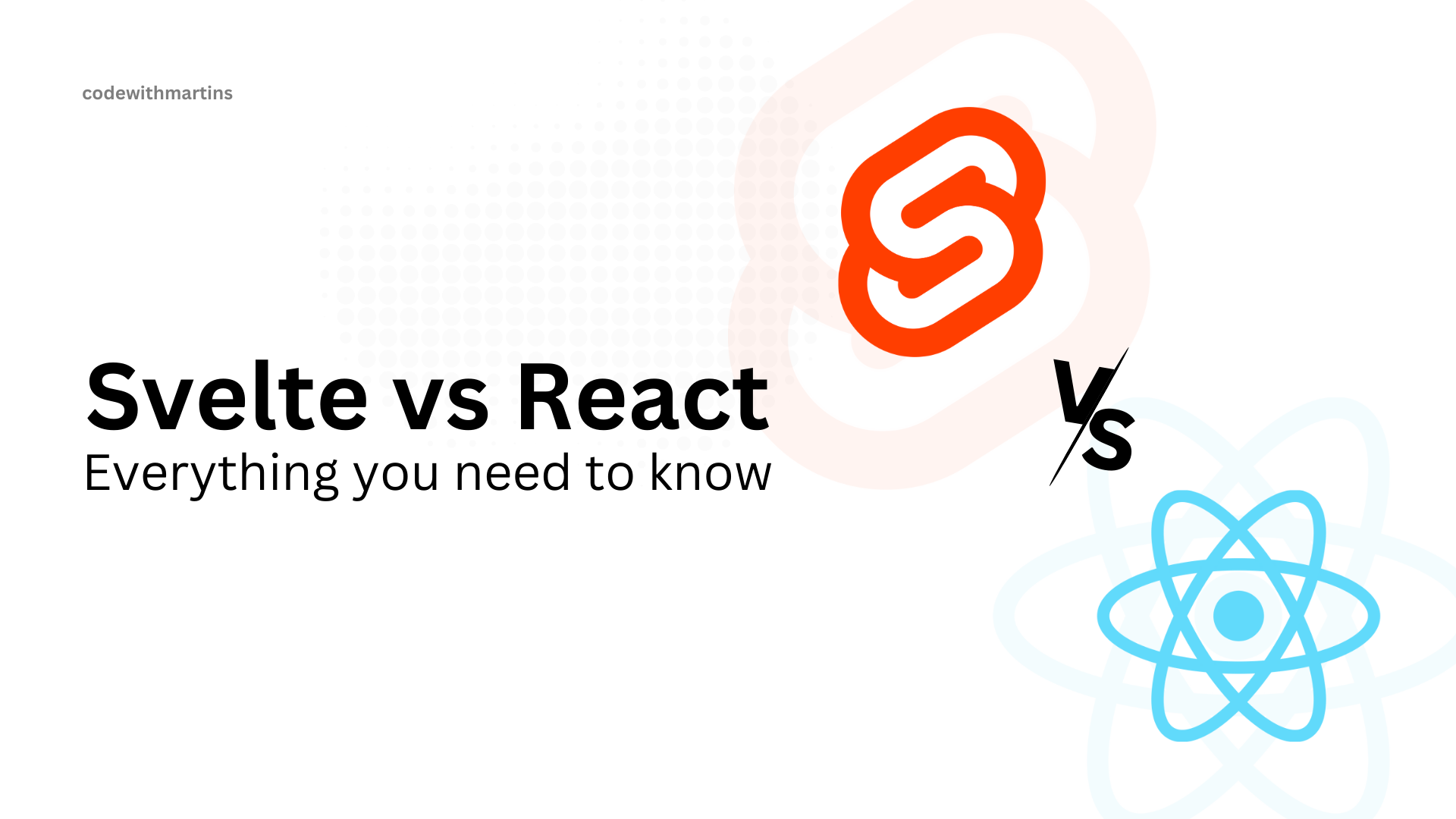Frontend Technologies: ReactJS vs. Svelte Explained
 Martins Ohez
Martins Ohez
Introduction
In the evolving world of frontend development, choosing the right technology can be a game-changer for you and your project. While many developers are familiar with popular frameworks like ReactJS and Angular, there are several other niche technologies worth exploring. Today, let's dive into a comparative analysis of ReactJS, a widely used library, and Svelte, a rising challenger with a unique approach. We'll see their differences, highlight what makes each unique, and also discuss their strengths.
Brief introduction to frontend development
Frontend development focuses on building the user interface and user experience of web applications. It involves crafting the visual elements, interactive features, and overall layout that users interact with directly in their browsers. Key technologies in frontend development include HTML, CSS, and JavaScript, along with various frameworks and libraries that enhance functionality and streamline development processes.
ReactJS: An Overview
ReactJS, developed by Facebook, is a popular JavaScript library for building user interfaces. It is known for its component-based architecture, virtual DOM, and unidirectional data flow, ReactJS is widely used in the industry.
Key Features
Component-Based Architecture: Encourages reusable and maintainable code.
Virtual DOM: Enhances performance by minimizing direct DOM manipulations.
Rich Ecosystem: A vast array of tools, libraries, and community support.
Libraries and tools
ReactJS has robust libraries and tools that enhance its functionality:
Redux: A state management library for predictable state updates.
React Router: A powerful routing library for handling navigation.
Styled Components: A library for writing CSS-in-JS for component-level styles.
Next.js: A framework for server-rendered React applications and static site generation.
Material-UI: A popular React component library implementing Google’s Material Design.
These tools and libraries make ReactJS a versatile choice for a wide range of applications, from simple websites to complex, large-scale web applications.
Svelte: An Overview
Svelte, created by Rich Harris, offers a unique approach by moving much of the work to compile time, resulting in highly optimized vanilla JavaScript at runtime.
Key Features
No Virtual DOM: Directly updates the DOM for faster performance.
Compile Time Optimizations: Produces efficient JavaScript, leading to smaller bundles.
Strengths
Performance: Faster applications due to compile-time optimizations.
Simplicity: Reduced boilerplate code and easier state management.
Bundle Size: Smaller bundles for quicker load times.
Detailed Comparison
| Feature | ReactJS | Svelte |
| DOM Handling | Virtual DOM | Direct DOM Manipulation |
| Learning Curve | Moderate | Low to Moderate |
| Performance | High (with optimization) | Very High |
| Bundle Size | Larger | Smaller |
| Ecosystem | Extensive | Growing |
| State Management | Redux, Context API | Built-in reactivity |
| Development | Component-based | Component-based |
Conclusion: Choosing the Right Tool
Choosing between ReactJS and Svelte depends on your project's needs. ReactJS is a great choice for large-scale applications with complex state management, while Svelte offers performance and simplicity.
My Journey with ReactJS at HNG
As an HNG intern, I'm excited to work with ReactJS in developing innovative web applications and also gain hands on experience by collaborating with other talented developers. HNG provides a fantastic platform to learn and grow as a frontend developer and other tech field.
Interested in been an HNG intern to advance your development skills? Check out HNG Internship. Additionally, if you're looking to hire talented developers, visit HNG Hire.
Kickstart your journey with HNG and see how you can make an impact in the world of frontend development!
Subscribe to my newsletter
Read articles from Martins Ohez directly inside your inbox. Subscribe to the newsletter, and don't miss out.
Written by
